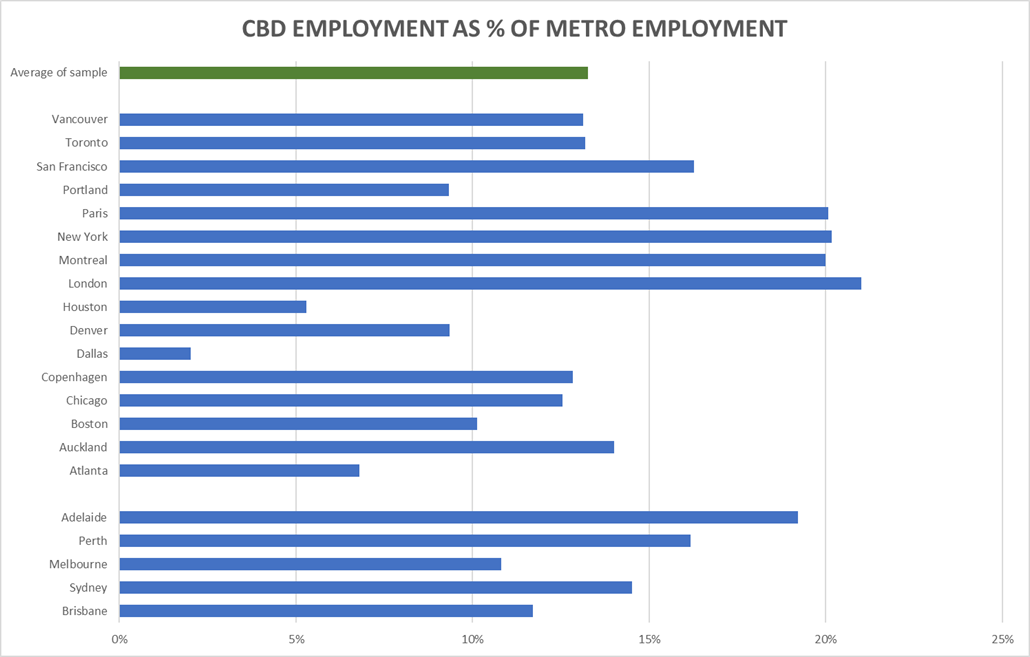
“The great enemy of truth is very often not the lie--deliberate, contrived and dishonest--but the myth--persistent, persuasive, and unrealistic. Too often we hold fast to the cliches of our forebears. We subject all facts to a prefabricated set of interpretations. We enjoy the comfort of opinion without the discomfort of thought.”
That was from a speech by former US Democrat President John F Kennedy, while speaking at Yale in 1962. I came across it during a visit to the Kennedy Presidential Library in Boston a few years ago. How true it still is.
The myth of the centralised urban economy is certainly persistent, persuasive, and unrealistic. It qualifies as opinion unchallenged by uncomfortable thought. It is also subject to prefabricated interpretations. It goes something like this: CBDs are where the majority of people work. Therefore we need planning that reinforces a centralised economy and we need to prevent people living far away from CBDs, instead providing more housing nearer to the centre – because this is where the jobs are and where everyone wants to be if they could. Attracting more jobs to a metro region is best done by ploughing more taxpayer dollars into CBD amenity, or into transport networks that serve the inner city. That simplistic outline crudely (and sadly) sums up too much of what passes for urban planning orthodoxy.
Census after census has proven this wrong. In Australia, the CBD share of metro jobs in major cities is between 10% and 15%. In the smaller capitals it falls between 15% and 20%. (It is also shrinking because the suburban economy is growing faster than the CBD, thanks mainly to industries like health and education). How does our CBD share compare on a global scale? Some argue that Australian cities need more centralisation to be efficient. Compared with what?
Comparing Australian cities to some global benchmarks is an interesting exercise. A study of around 100 cities in Australia, Europe, Asia, Canada and the USA tallied more than 300 million metropolitan jobs. Of these, under 30 million were in CBDs. The average was 9%. But these were mostly 1990 data, and some of the cities were not very comparable to Australia. So I selected a slightly more comparable list and updated the data to around 2016 to 2020 numbers. For Australian cities, the CBD was the 2016 Census SA2 boundary while the Greater Metropolitan area was used for the whole. While the numbers will have changed, the proportions won’t have changed much, so it’s useful as a guide.

Based on this selection, the average CBD share of metro wide jobs for a city in a modern western economy is around 13%. Not 30% or 50% or 60% but 13%. Meaning globally some 87% of people living in cities of substantial scale and with substantial urban economies, do not work in the CBDs but are more likely to be found working in suburbs.
Sometimes, in efforts to bolster the numbers to favour the centralisation narrative, the definition of a CBD is enlarged to something like a 5 kilometre radius – which in most cities reaches very much into suburbia. While it is true that CBD boundaries don’t fully reflect the extent of near city employment, it is also true that metro boundaries don’t fully reflect the boundaries of suburban employment. Too often the inner city is broadly defined and the outer urban narrowly defined. Do both, and hey presto you can prove anything with statistics.
Read the rest of this piece at The Pulse.
Ross Elliott has more than thirty years’ experience in urban development, property and public policy. In addition to his consulting work he is Chair of the Lord Mayor of Brisbane’s Better Suburbs Initiative, a director of The Suburban Alliance, and District Chair of the ULI in Brisbane, Australia. His past roles have included a number of industry leadership positions. He has written and spoken extensively on a range of public policy issues centering around urban issues, and maintains his interest in public policy through ongoing contributions such as this or via his monthly blog, The Pulse.
Photo: Into Dubbo from the west, by Tim J. Keegan via Flickr under CC 2.0 License.













JFK
Was president in 1962 and did not attend Yale.